> Findings & Analysis
|
The evaluation of this project is based on the data collected from the students’ feedback in questionnaires, the performance in their work, the teachers’ comments in questionnaires, as well as the observations the teachers made during the project. |
| 1. Students were motivated to learn and use English |
| |
The following table provided the key figures that substantiate the conclusions drawn.
Figure |
Meaning
Percentage of students who… |
85% |
…liked the Workplace Communication Project. |
90% |
…were willing to read, watch or produce a poster, leaflet or a TV commercial. |
75% |
…thought their favourite activity was watching TV commercials. |
84% |
…thought the project helped them learn English. |
As for the participating teachers, all of them found the project motivating and useful for students. They could see the benefits and advantages of making use of the elective component to address students’ interests and needs, as well as enhance their motivation to learn English. Although the project took up a lot of time, they all thought this was an investment worth making. |
| |
| 2. Students understood how the English language functions in work-related contexts and applied this understanding to their learning and use of language in real life |
| |
The simulation activity provided teachers with opportunities to show students how the English language can be used in the retailing and advertising industries. They needed English because companies usually want to extend the market to overseas and sell their products to foreign customers.
During the sales presentations, some students were able to make use of their promotional materials to sell their products. They were able to see the functions of posters, leaflets and TV commercials. Others tended to see them mostly as writing tasks but were not so good at making the connection between the promotional materials and their use in selling the product. |
| |
| 3. Students developed positive attitudes towards work and learning which were crucial for their future careers |
| |
81% of students found the project useful for them in terms of learning more about work and workplaces. Some students reported in the questionnaire that they liked the project because they found it useful for their future career. They learnt not only English skills for workplace communication, but also work skills and collaborative skills. 25% of students thought that they had also developed some leadership skills. 36% of students reported that they had developed a positive attitude towards working after completing their secondary education.
This table shows how students developed the required employability skills, basic elements of job success and “Five Minds for the Future” through different tasks / the process of the project:
Required employability skills/ Basic elements of job success/ “Five Minds for the Future” developed
(for details, please refer to II. R & D Background) |
Tasks/ Process to develop the skills |
- |
Basic competency skills |
| |
- |
reading & writing |
| |
- |
computation |
- |
The Disciplined Mind |
|
| - |
Reading and writing company profiles, posters, leaflets and storyboards |
| - |
Producing TV commercials |
|
- |
Communication Skills |
| |
- |
listening |
| |
- |
speaking |
|
| - |
Watching TV commercials
While watching the TV commercials, students listened to the jingles, songs, slogans and/ or dialogues. The visual components helped students understand the messages conveyed in the commercials. |
| - |
Producing TV commercials
While discussing the production of the TV commercials, students demonstrated group discussion skills like negotiating meaning and making suggestions. |
| - |
Conducting sales presentation
Students demonstrated individual presentation skills through making a sales presentation. |
|
- |
Adaptability |
| |
- |
problem solving |
| |
- |
creative thinking |
|
In the process of setting up a company, creating posters, leaflets and TV commercials to sell a product, students faced problems. Students tried to overcome the problems with the teammates while producing their innovative products. |
- |
Developmental Skills |
| |
- |
self-esteem |
| |
- |
career planning |
| |
- |
motivation |
| |
- |
goal setting |
|
During the process of doing the project, students got to know more about the types of work they were interested in or hated doing. Their self-esteem was enhanced when they found that they were able to produce the posters and TV commercials, and did well in the sales presentations. Teachers encouragement and feedback during the process was very important. |
- |
Group Effectiveness Skills interpersonal |
| |
- |
teamwork |
| |
- |
negotiation skills |
|
Team work, interpersonal and negotiation skills were crucial to the project. When students were rehearsing for the shooting of TV commercials and the sales presentation, it was observed that in some of groups in different classes, the stronger students were helping the less able ones to read their lines. |
- |
Positive attitudes towards work |
| |
- |
independence |
| |
- |
reliability |
| |
- |
punctuality |
| |
- |
ability to produce good quality work |
| |
- |
Hard working |
| |
- |
Being a valued team member |
| |
- |
Creating and maintaining a positive relationship with supervisors, managers and co-workers. |
|
| - |
Independence
The CEOs (teachers) told the employees (students) that in the workplace the employees had to be proactive. They would not be told what to do all the time. The CEOs and supervisors did not want to ‘take care of’ their employees all the time. Good employees should know their duties well and should know how to perform them. Colleagues might not help them either. First, each person had their own duties to fulfill, people were too busy to take care of the others. Second, colleagues might be rivals who wanted to do better than each other in order to get a promotion. |
| - |
Reliability
CEOs told the employees that CEOs and supervisors tended to give opportunities to those who were reliable.Those who failed to show up in the sales presentations without any explanation (absence without telling the CEOs and team mates) were unreliable. Colleagues might not want to team up with them. Supervisors would hesitate to delegate important tasks to them.
During sales presentations, when introducing the presenters, a few groups with absentees still presented the names and titles of the absentees (e.g. S: Johnny Wong, our marketing manager, he is absent today.) The CEOs told them that if a member was absent, they could simply skip their names and titles. All the presenters got important roles. Not showing up in sales presentations which was an important event would give the customers the impression that the company was unreliable. |
| - |
Punctuality
Deadlines for submission of work have been set. Students had to meet deadlines. The CEOs explained to the employees the possible consequences of failing to meet the deadlines. For example, inability to show the clients the work according to the schedule gave the clients the impression that the company was unreliable. They might not use the company anymore and the company might lose money due to loss of clients. If the clients and the company have signed a contract, the company might be sued and have to pay for the clients’ loss. |
| - |
Ability to produce good quality work
The CEOs told the employees that poor quality work and wrong information on the promotion materials affected the image of the company. Information on the poster, leaflet and TV commercials must be coherent and there should contain as few mistakes as possible. Mistakes related to company and product information gave customers a feeling that the company was not serious, professional or reliable. |
| Other attitudes: |
| - |
Hard working |
| - |
Being a valued team member |
| - |
Creating and maintaining a positive relationship with supervisors, managers and co- workers. |
|
|
Some students realised that the information must be coherent in the promotional leaflets. Instead of seeing them as separate writing tasks, they were all used together to sell the product. |
|
All the information about the company and the design of the promotional materials provided chances for students to develop their creating mind. |
|
Working as a team required respecting each others’ values, views and opinions.
Being the audience at the sales presentation required respect, especially for weaker groups. Teachers asked them to pay attention to all presentations, not to laugh at the presenters and not to criticise the presentations or the products harshly even if the presenters or the products looked unprofessional. |
|
In order to sell the product, the advertising companies used different strategies to persuade the customers to buy the products. Teachers led students to reflect on whether the salespeople should tell the customers all the correct details of the product, whether it was ethical to hide some information from the public or to use some ways to mislead the public. |
|
| |
| 4. Students showed their talents and explored jobs which they were interested in |
| |
The products which students sold were mainly under four categories: Food and drinks (chocolate & energy drinks); products which help to achieve good academic results (memory bread, cup noodles); slimming products (pills) and personal care (tissue paper).
The products showed students’talents. Some of the student work, which showcases their talent and creativity, is shown below:
Students’ talents |
Student work |
Creativity |
(A) Company profile
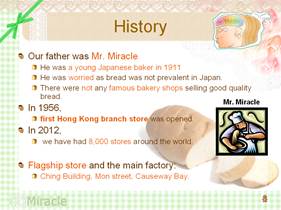 |
(B) Awards
The company showed the potential customer the awards 'Memory Bread’ has won. This was one of the effective strategies to persuade customers to buy the product. The awards were all related to food. The most interesting one is ‘Yummy Yummy Award in Germany’, (an overseas award, implying that ‘Memory bread’ was recognized by foreign countries as well, and therefore was a good product that they should not miss). |
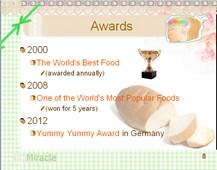 |
|
(C) The products
i) CAP noodle
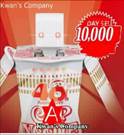 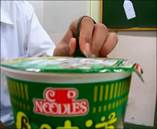 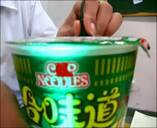 
To eat the noodles, you don’t have to use boil water or an oven/ microwave. Just PLUG IN the device.
ii) BRANG (Potato chips)
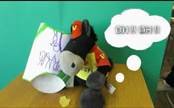
Edible package
iii) Memory Bread by Miracle
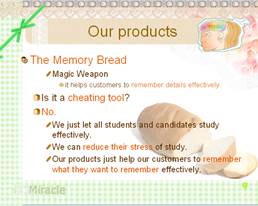 |
(D) Product names
Product: Camera
Product name: Chik-Chit 360
Students used onomatopoeia to name a camera. ‘Chik-Chit’ is the sound made by cameras when the photo shooting button is pressed. ‘360’ implies that the camera allows owners to take pictures of everything around them. It was about the function of the camera – able to take pictures of everything. |
(E) Slogans
Product |
Product name |
Slogan |
Camera |
Chik-Chit 360 |

|
Bread |
Memory bread |

|
Power drink |
RAVER |
Find your flavour, be a Raver |
Lock the Time, Nothing we can’t [do]’ is an appropriate slogan for a camera. The main function of a camera is to capture moments in life, thereby locking time. There are moments which people would like to freeze and lock. ‘Nothing we can’t (do)’ is telling the customers that ‘if you buy this product, you are able to lock time’
The slogan ‘Miracle gives you miracle’ uses repetition. The first ‘Miracle’ is the name of the company. The second ‘miracle’ tells customers that this product performs miracles so they should buy it. It’s short and easy to remember. |
(F) Special offers
 |
(G) Advertising strategies
Students were able to apply the advertising strategies to their TV commercials to persuade customers to buy their products.
| i) use of comparison |
| |
Examples:
Slimming pills (Fat → slim)
Energy drinks (Weak → powerful) |
| ii) use of the product in an unusual way through anthropomorphism: giving human characteristics/ behavior to inanimate objects |
| |
Example:
Giving an orange human characteristics like a smile.
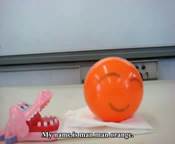 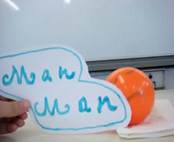 |
| iii) emotions/ feelings |
| |
| Examples: |
a) |
Students associated their products with music to arouse emotions/ feelings
Some examples: |
| |
- |
Product: Home Chair (massage chair)
Song: Moon River
Emotions/ feelings: relaxed, soothing |
| |
- |
Product: Chik chit 360 (camera)
Song: Valders Fields
Emotions/ feelings: relaxed, soothing |
| |
- |
Product: Duck Power (energising pills)
Music: Cadbury (eyebrows)
Emotions/ feelings: powerful, energetic |
| b) |
Happy moments with friends |
| |
Product: Chik chit 360 (camera)
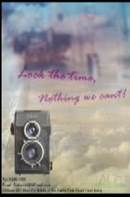   |
|
| iv) products that do amazing things |
| |
a) If you wear the Voodoo DIY jewelry, you can change from boy to girl.
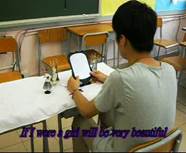  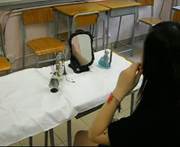
b) If you eat Memory Bread/ Candy King/ CAP Noodle, you can get excellent results in exams. |
v) reinvent/ improve/ change yourself |
| |
| Examples: |
- |
If you take these pills, you can be slim and pretty.
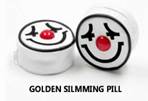 |
- |
If you drink/ eat those energising drinks/ food, you will become powerful.
(Raver, Explosion Power, Red Man) |
|
| vi) ridicule/ humour |
If you don’t use Kong tissue, you will look like a silly snowman.

| Combination of different advertising strategies |

Product: Healthy pills
Product name: Duck power
Running time: 00:54
Scene |
Strategies |
Boy 1 entered the room and tried to wake Boy 2.
Boy 2 refused to wake up as he was very cold. He asked Boy 1 why he didn’t feel cold. |
- |
Advertising strategy: Making comparisons |
- |
Advertising strategy: Peer pressure |
|
Boy 1: (gasp) Because I have this. (pulling out a bottle of pills from his pocket) |
- |
Use of Doraemon special effect to attract audience’s attention. |
|
Boy 1: This product is Duck Power. It is rich in Vitamin A, B, C, D & E and without additives.
It is also recommended by doctors.
Try it! |
- |
Advertising strategy: Health |
- |
Play Cadbury (eyebrow) music to make the audience feel energetic and lively |
| - |
Advertising strategy: Recommended by experts |
|
Boy 2: Let me try it. (take the pill)
I am full of power!!!!! |
- |
Advertising strategy: Improve yourself |
|
Boy 1: Now you can see. If you try it, you can change your life. Duck power. |
Use of a Japanese song ‘Wishes’ (musical box version) from a famous Japanese TV series ‘Below the Same Root 2’ to give the audience positive, warm feelings. |
|
|
| Visual-spatial intelligence |
|
| Musical intelligence |
Selection of music or songs to give the product a personality/ to arouse the emotions/ mood of audience/ to indicate the impact of the product
i) Product: Slimming pills |
|
Song: I Need a Doctor by Eminem
|
| |
Lyrics: |
I'm about to lose my mind
You've been gone for so long, I'm running out of time
I need a doctor, call me a doctor
I need a doctor, doctor to bring me back to life. |
| |
(The music intensifies how the characters are desperate for help from professionals. They hope the experts can bring them back to life) |
- |
If you drink/ eat those energising drinks/ food, you will become powerful.
(Raver, Explosion Power, Red Man) |
| |
|
ii) Product: camera |
|
Song: Valder fields by Tamas Wells
|
| |
Lyrics: |
I was found on the ground by the fountain
At Valder Fields and was almost dry
Lying in the sun after I had tried
Lying in the sun by the side
We had agreed that the council would end
At three hours over time
Shoelaces were tied at the traffic lights
I was running late I could apply
For another one I guess
If department stores are best
They said there would be delays
And only temporary pay… |
| |
(A folk song which is relaxing and soothing. The song hints at the tension between a life of responsibility -- being on time, applying for jobs and a relaxing life of contemplation -- falling asleep on the warm concrete next to a fountain (http://en.wikipedia.org/wiki/Valder_fields). The students tried to link the camera to beautiful views and time – the camera could take pictures of beautiful scenery and capture the precious moments) |
iii) Product: Sports shoes |
|
Song: 6 Foot 7 Foot by American rapper Lil Wayne
This rap song has strong beats. The lyrics convey a sense of rebelliousness. This song associates well with skateboards.
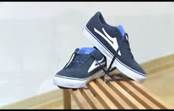 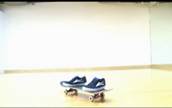
|
| |
Other examples:
Superman music to show power
Slow tempo to fast tempo to indicate the change of speed. |
|
| IT |
The following IT skills can be identified in the TV commercials: |
- |
Editing |
- |
Using different designs for transition between scenes |
- |
Using fast forward to show speed |
- |
Using slow motions to show sluggish motions |
- |
Contrasting the effects of products before and after use by combining fast forward and slow motions |
- |
Using black and white to show the past and colours to show present |
- |
Using sound effects (e.g. Doraemon sound effect) to draw audience’s attention |
- |
Adding graphics and word art to the video clip |
| Students learnt these skills either in the IT lessons or by themselves (independent learning) |
|
| Other skills |
Playing Skateboard
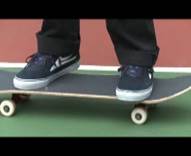 \ \
Laka Sports Shoes |
|
|
|
|
Copyright © 2022 Language Learning Support Section, Education Bureau. All rights reserved.
|
|

